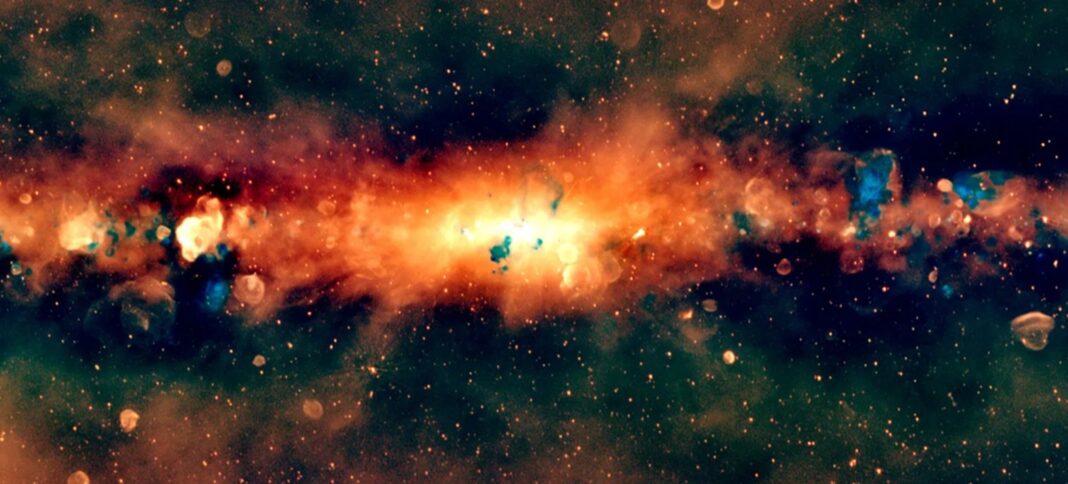According to research published in the Astronomical Society of Australia, in October 2025, a ribbon of red splotches interspersed with blue dots marks the largest, most detailed image of the Milky Way in radio wavelengths ever assembled.
This new visible side of our fairly flat spiral galaxy, as seen from Earth’s southern hemisphere, will help astronomers find and classify objects within it and better understand ongoing processes, says astronomer Silvia Mantovanini of Curtin University in Perth, Australia.
She briefed that the new image was captured during the search for supernova remnants, leftover bubbles of gas and dust from exploding stars. Most of these objects have been discovered in radio light because they can continue emitting radio waves for tens of thousands of years after an explosion.
Researchers have detected about 300 supernova remnants in the Milky Way, but estimate that roughly 2,000 exist. Studying more stellar remains will shed light on the last evolutionary stages of stars and how they died, Mantovanini says. However, it was daunting to distinguish supernova remnants from other objects with past telescopes and surveys.
Mantovanini and colleagues compiled observations of radio waves captured over more than 140 nights from 2013 to 2020. The data were obtained from the Murchison Widefield Array telescope in Western Australia during two surveys. The surveys were carried out to map the southern hemisphere sky. Each observation captured a photograph of one section of the sky and lasted about two minutes, capturing a specific range of radio wavelengths.
Sorting together almost 2,000 of these observations using supercomputers revealed a dazzling edge-on view toward the center of the Milky Way, spanning roughly 60,000 light-years, or just over half the galaxy’s width.
The team of researchers stacked 20 versions of the image, each a different color to represent a specific range of radio wavelengths, with longer wavelengths depicted in red and shorter wavelengths in blue.
According to researchers, these colors hint at the mechanisms behind the radio emissions, such as heat-related radiation from stellar nurseries. They look like blue bubbles, and emissions from supernova remnants that don’t come from heat, which appear as red bubbles.
Mantovanini says that this multicolored view of the Milky Way makes it easy to distinguish what is going on within the galaxy. Its creation reminded us that we’re just a small part of something incredibly complex.
Reference: https://www.sciencenews.org/article/largest-radio-image-milky-way-galaxy
Similar Articles: THE FIRST PHOTO OF OUR MILKY WAY’S BLACK HOLE REVEALS


